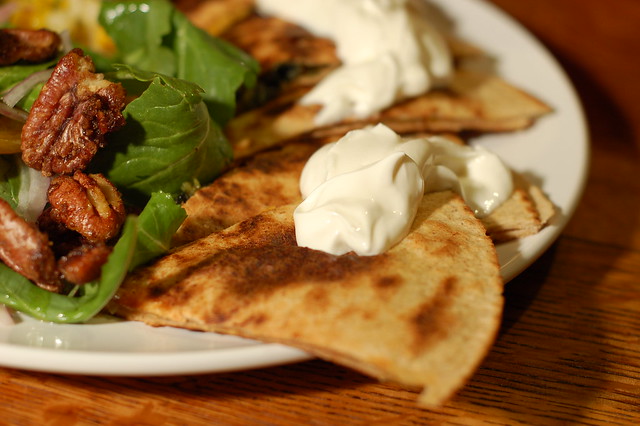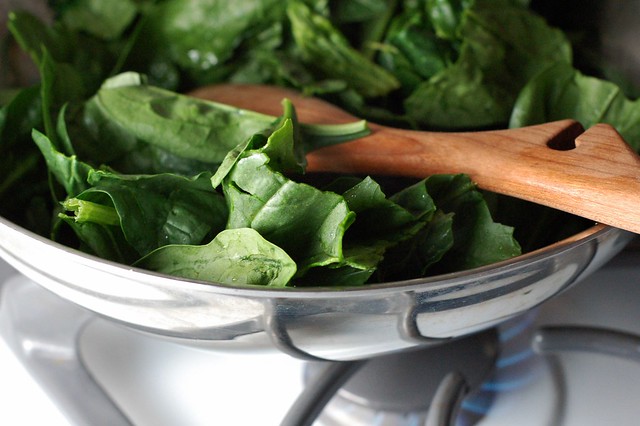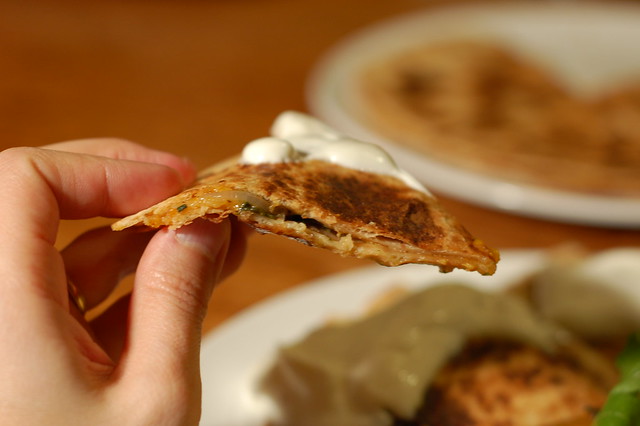Eatwell included this yummy-sounding recipe in this week's newsletter and I decided to try it out since we are sadly pesto-starved at this time of year (even here in the food fantasy land of Northern California, basil is not in season right now.)
The pesto recipe is originally from a 2001 issue of Cooks Illustrated. It calls for both arugula and parsley (killing two birds with one stone!), as well as ricotta cheese, which I thought sounded interesting. The end result is really good - the ricotta gives it a creamy texture, the arugula adds some bite, the garlic is mellow after being toasted (an idea that was new to me), and the nuts and cheese do those things that only nuts and cheese can do...
Served with a green salad (I threw some candied pecans on there for extra crunch and sweetness) and fresh bread with butter, this made a delicious dinner.
Arugula, Parsley and Ricotta Pesto
Makes 1 1/2 cups, enough for 1 lb. of pasta
Note that when adding any pesto to cooked pasta it is important to include three or four tablespoons of the cooked pasta water for proper consistency and even distribution. This pesto can be kept in the refrigerator for up to three days if covered with a sheet of plastic wrap or a thin film of oil.
Ingredients
* 3 medium cloves garlic , unpeeled
* 1/4 cup pine nuts (or walnuts or almonds)
* 1 cup arugula (packed), washed and dried thoroughly
* 1 cup fresh parsley leaves (packed), washed and dried thoroughly
* 7 tablespoons extra-virgin olive oil
* 1/3 cup ricotta cheese
* 2 tablespoons grated Parmesan cheese
* Table salt and ground black pepper
Instructions
1. Toast garlic in small dry skillet over medium heat, shaking pan occasionally, until softened and spotty brown, about 8 minutes; when cool, remove and discard skins. While garlic cools, toast nuts in skillet over medium heat, stirring frequently, until golden and fragrant, 4 to 5 minutes.
2. Place arugula and parsley in heavy-duty, quart-sized, zipper-lock plastic bag; bruise all leaves with meat pounder. (I have to admit that I skipped this step though you are welcome to follow it - seems like a fun way to get some aggression out.)
3. Blend the garlic (cut it into a few pieces to make it easier to blend), nuts, arugula, parsley, and oil until smooth in a food processor, stopping once or twice to scrape down the sides of bowl with a rubber spatula. Transfer the mixture to a small bowl and stir in the cheeses. Season to taste with salt and pepper.
Like this recipe? Click here to browse through more Eatwell Recipes.



